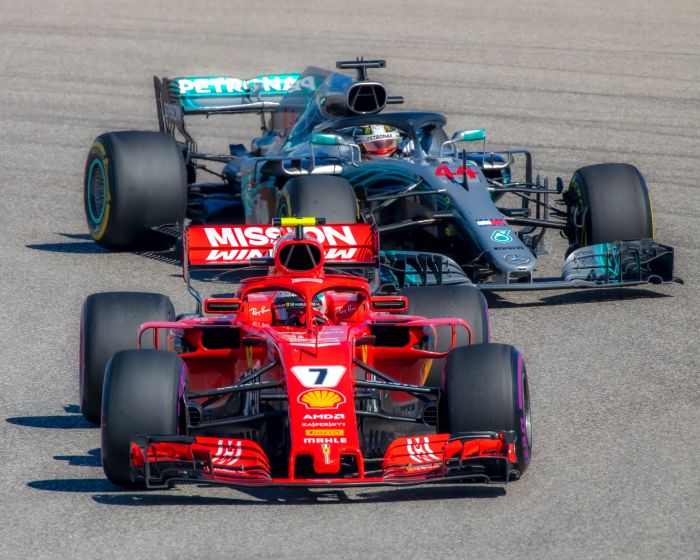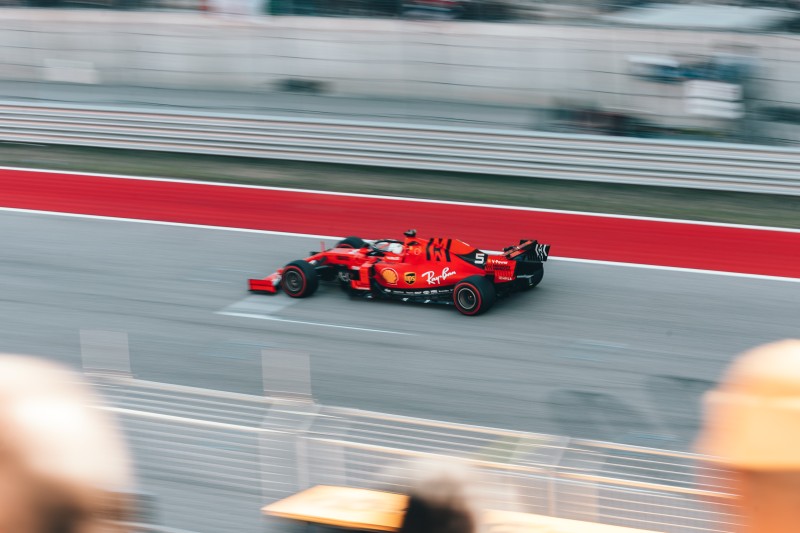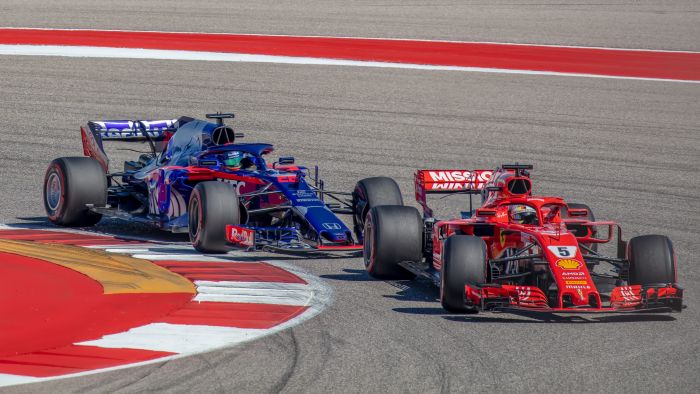
The teams and drivers in Formula 1 are required to abide by a number of severe restrictions. These regulations were set up for the safety of the drivers, crew, and viewers as well as to maintain the fairness of the sport. Knowing how F1 grid penalties function is beneficial for comprehending the sport.
So, what is an F1 grid penalty? A grid penalty is a punishment that an F1 racer gets for violating race regulations, and the racer will start the next race on the starting grid a few spots farther back. Participants who violate the regulations in any manner are subject to grid penalties.
All of the effort the drivers put out during qualifying is wasted if they get one of these penalties.
Drivers will do everything to avoid receiving a grid penalty. They may be particularly valuable at circuits like Monaco because drivers may find it challenging to pass one another. We’ll go through each of the possible causes of a driver receiving a grid penalty in greater detail following.
Table of Contents
F1 Grid Penalties: What Are They?
Regardless of where the driver qualified for the event, their starting position in the following race will be shifted back if they are given a grid penalty. A five-place grid penalty would put a driver who qualified first on the grid in sixth place for the race.
If a driver commits a rule violation during a race or the Grand Prix weekend, they will get a grid penalty. Drivers may find them annoying, particularly if they encounter them on city circuits where passing is difficult. We’ll talk more about this momentarily, but sometimes a driver has little influence over getting a grid penalty.
If you want to know How Much Does an F1 Pit Crew Member Earn? (INTERESTING FACTS), click here.
A driver’s morale suffers when they get a grid penalty since their efforts throughout qualifying were in vain.
Note: Based on the seriousness of the event they were engaged in, drivers may be subject to one of three sorts of grid penalties. Grid penalties come in three different forms right now: a 3-place, 5-place, and 10-place grid drop.
What Kind of Impact Does a Grid Penalty Have on a Racer?

Grid penalties may significantly affect the racers’ starting positions, which can determine the final outcomes of a race. It seems improbable that a driver with a grid penalty on a track where overtaking is famously tough would be able to finish in the top three.
Drivers may set up their vehicles to be more suitable for racing circumstances than qualifying situations if they enter qualifying understanding they would suffer a grid penalty.
If you want to know What Is the Top Speed of an F1 Car? (AMAZING!!!), click here.
In order to improve their chances of overtaking other competitors during the race, they must configure their vehicle for greater maximum speeds.
Even though he was given a grid penalty at the 2021 Brazilian Grand Prix, a driver was still able to have a successful racing weekend despite the fact that he had to start farther back in the field.
They may not be able to win the race, but they could certainly receive several respectable points. If they are able to pass numerous cars during the Grand Prix, racers with grid penalties may potentially finish on the podium or capture the victory.
If you want to know How Long Is a Formula One Season? (For The Fans), click here.
Grid Penalties In F1: How Do They Function?
Grid penalties are given out in response to situations in which drivers have broken the regulations. They are given due consideration by the stewards, who conduct a thorough examination of them, before being delivered over to the driver.
A grid penalty will only be imposed right away if the driver exceeds the permitted limitations by using an additional engine or gearbox.
Based on how serious their violation was, drivers may get one of three sorts of grid penalties. Drivers will get a 3-place grid penalty for minor, less severe violations. Drivers may get a 5-place grid penalty for more severe violations like violating parts restrictions.
If you want to know What Are The Best F1 Simulators? (ON THE MARKET), click here.
The most serious violations including frequent component modifications will have their grid positions dropped by 10 spots.
Although these penalties are widespread, there isn’t always a scale or set of rules that determine what grid penalty fits a given instance.
The stewards will examine the rules and prior instances to determine the most suitable punishment. This enables them to make decisions consistently, particularly when there are many drivers who have committed the same offense.
Note: Grid penalties are often not revealed at the race because the stewards must closely inspect video and data after the event. In rare exceptional circumstances, the stewards might also be required to call the driver over to talk about the event.
What Causes A Driver To Receive A Grid Penalty?
A driver may be given a grid penalty for many different reasons. The stewards may debate certain instances, but they must immediately punish others without discussion. Grid penalties are particularly frequent when drivers violate the technical requirements by modifying the components of the engine or gearbox.
1. Risky Driving
It seems unlikely that anybody would be fined for reckless driving with 20 of the top drivers on the grid. Unfortunately, there are times when the racers test their luck too far and drive recklessly, endangering their competitors.
In F1, dangerous driving may take several forms, from weaving on straightaways to making risky or impractical overtakes. Sometimes, this rule might also be used if it is obvious that the driver has lost control of their vehicle.
If you want to know How Many F1 Drivers Have Died? (CHRONOLOGICAL), click here.
A driver might easily get a 5-place grid penalty before the race on Sunday if they were seen driving dangerously throughout practice or qualifying. They can suffer a severe disadvantage if they have to win several crucial races.
2. Causing An Accident
Even if it seems clear, hitting or scraping another automobile is a severe infraction. Formula 1 is a very non-contact sport, in contrast to many other types of racing. Cars may bump into or shove each other on the track in various forms of racing like NASCAR or WEC.
This is so that they can travel at exceedingly high speeds yet be very delicate. Even a minor bump from another vehicle might be disastrous. A collision with another vehicle might result in catastrophic damage, such as pierced wheels or wings that are torn off. Crashes have the potential to seriously hurt a driver or, in the worst-case scenarios, finish the race altogether.
The stewards must conduct a thorough investigation and take into account the factors that led to the incident before they may penalize a driver.
Note: To evaluate if the incident was preventable, videotape and telemetry data must be examined.
A “racing incident” is a term that’s used to describe an accident that occurs between two automobiles during a race. This occurs when both drivers were battling for position when the incident happened by coincidence and none of them was at fault. Grid penalties are not applied in this situation.
If you want to know How Much Does a NASCAR Car Cost? (IN DETAIL), click here.
Drivers who collide with another vehicle often get a time penalty during the race, whereas if the stewards wait until the race is over to make their decision, they will earn a grid penalty for the next race.
3. Getting in the Way of Another Driver

A blue flag is used in Formula One to signal to a driver that a quicker vehicle is coming and that they should move to the side to avoid obstructing them. The blue flag will only be raised during the race for vehicles that are lapped. While in training and qualifying, they are used for everyone.
A driver moving slowly in qualifications may easily impede a driver who is doing a fast lap, therefore the blue flag is crucial. This may mess their whole lap and affect their starting position in the Grand Prix, which is determined by their qualifying place.
If you want to know Why Do F1 Cars Have Sidepods? (INTERESTING FACTS!!!), click here.
A driver might easily get a grid penalty for obstructing another driver during a hot lap if they impede another driver at qualifications. If it occurs at the finish of qualifying, it is a more severe violation.
If a driver interferes with another during training, they may potentially get grid penalties. Being hampered by a slower vehicle can be immensely harmful to drivers and teams since practice is a crucial period for them to collect statistics and fine-tune the configuration of their engines.
4. Going Beyond the Reprimand Threshold
If a driver violates the rules in Formula One but does not exactly merit a punishment, they will get a warning. To put it simply, this is the stewards’ way of stating, “We didn’t like what you did, therefore we’re alerting you not to repeat it. Drivers may sometimes get a warning in addition to a fine, depending on the severity of the event.
In F1, reprimands are often issued and are mostly applied to off-track offenses. As happened when Sebastian Vettel altered the position boards at the 2019 Canadian Grand Prix, they may also be issued for a breach of sportsmanship.
Note: There is no regulation that forbids you from doing that, but it is obvious that you don’t need to.
A driver who receives more than five warnings in a season may be subject to a grid penalty under a mechanism the FIA has put in place. As a result, drivers take reprimands considerably more seriously because there will be penalties if they ignore them.
If you want to know Why Are F1 Cars Getting Bigger? (WHAT YOU DIDN’T KNOW), click here.
5. Overstepping Parts Restriction
Over the course of the last several years, Formula One has placed a significant emphasis on reducing expenses. Cost-cutting prevents larger teams from spending as much money in comparison to smaller ones. In order to promote the long-term viability of the sport, it also aids in luring new teams.
The restriction that teams may only employ 3 engines during the season is one of the limitations that have been implemented to cut down on the total cost of teams.
This is a condensed description of the rule since various parts have varying restrictions. The 6 separate components that make up the engines may be switched out between races.
A driver may get a 10-place grid penalty if they go above the limit for a certain part. Every new component they add after receiving this punishment results in a 5-place grid penalty for the race in which the component is being implemented (if they add more components than that, they start at the end of the grid).
Teams are permitted to use a new engine, but this penalty deters them from performing so if it is not absolutely necessary. They will have to put up more effort to make up for the places they drop throughout the Grand Prix as a consequence of starting further back than they qualified.
6. Driving Too Fast Despite Yellow Flags

If there is a problem up ahead, cars are signaled with yellow flags. It’s time to slow down till the driver sees the green flag and knows it’s safe to go faster. Drivers must slow down, even more, when there are two yellow flags.
Yellow flags are often shown throughout qualifying and training as drivers force themselves to the edge spinning out or making a collision with the barriers. A yellow flag is often seen at any time throughout an F1 session.
If you want to know What’s the Difference Between IndyCar and F1? (YOU DIDN’T KNOW), click here.
A grid penalty for the race, meanwhile, may be imposed on a driver who does not let off the gas and slow down whenever the yellow flag is raised. Depending on how serious the incident was, if riders do not slow down sufficiently, or whether they entirely disregarded the yellow flags, the grid penalty’s intensity would vary.
7. Strategic Use of Penalty
It’s nearly unlikely for any team to finish a whole season without going over these restrictions, given how lengthy F1 seasons are and how intensely the engines must work. Teams in the front of the field generally urge each other harder, therefore this is particularly true for such teams. It’s exceedingly uncommon to see in the present Formula One, but several teams have finished the championship with just 3 new engines.
The team’s power unit will eventually need to be changed, and they plan to do it at a power circuit where having a newer engine accessible to them would give them a significant edge. These tracks provide them more chances to overtake, giving them the chance to advance back through the pack.
Teams may decide when to swap out their power unit components, provided that they don’t malfunction in the middle of the race. This enables them to have a new power unit on hand for powerful tracks like Monza which may help them achieve faster lap times. In this approach, they may swiftly make up whatever distance they lose as a result of penalties.
8. Switching Gearboxes
Another element that has been regulated in F1 is the gearbox. Gearboxes are clearly essential to the automobile, but they are also costly to produce, which is why they are constrained by the criteria for saving money. A gearbox may be broken by a single strong impact or simply a bump at the incorrect angle, therefore championship teams typically deal with a lot of them throughout a season.
If you want to know What is Formula 1 DRS? (THINGS YOU DIDN’T KNOW), click here.
Before being changed, a gearbox had to have completed at least six races, according to the regulations that applied at the time. Any sooner than that and a team would be docked five positions on the grid.
After a serious incident or a crash with another automobile, we’ve witnessed drivers getting fined for switching gears. Furthermore, the regulations governing gearboxes have recently been changed to exclude teams from paying a fine when they collide during training or qualifying.
Similar to the power unit rules, the new 2022 regulations amended this limitation to instead impose a limit on the number of gearbox components utilized. There is a maximum of 3 units each season available for the purchase of the case and the cassette. There is a seasonal restriction of four for the driveline and several other gear-changing components.
Concluding
When a driver receives a grid penalty, they will start the following race 3, 5, or 10 spots farther back on the grid. A driver may get a grid penalty for a variety of reasons. It occurs often as a result of risky driving and regulation violations. Nevertheless, breaking technical requirements may also result in fines for drivers.
